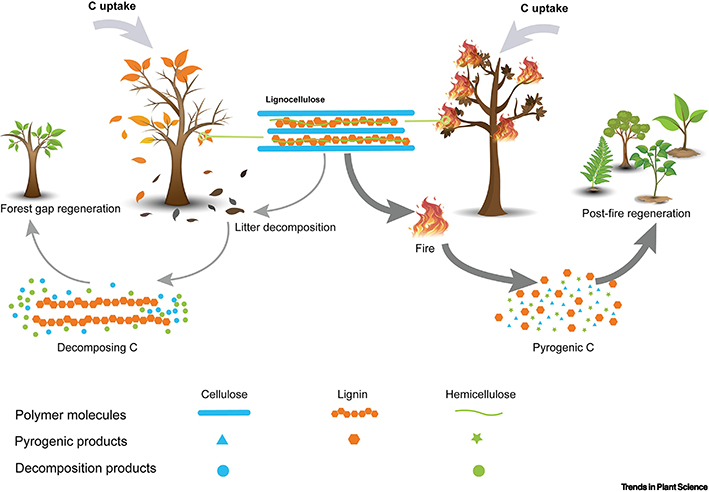We are interested in every aspect of seed dormancy and germination, but our efforts are currently focused on a special case of seed germination, smoke-promoted seed germination.
Fire is not a pure destroyer. It creates new landscape while deleting aboveground plants, since there are seeds sleeping in the soil that wait for the fire to wake them up. In many occasions, fire-derived plant regeneration is dependent upon smoke-promoted seed germination.
We are pursuing the smoke cues (the active smoke compounds responsible) for seed germination. Recently, we found syringaldehyde is a novel smoke cue (different from the known karrikins) and proposed that lignin-derived pyrolytic compounds might function as ecologically relevant smoke cues for post-fire plant regeneration.
We are trying to find answers for the following questions.
1. Are the any new smoke cues? How many (types of) smoke cues are there?
2. What are the underlying mechanisms of smoke-promoted seed germination?
3. How to use the smoke cues in ecological conservation or agriculture?
If you are also interested in these questions, you are welcome to join us.

Figure. There is a close association between fire and lignin. Lignin is resistant to decomposition in the litter and relies on fire to degrade. Pyrolytic compounds derived from lignin might function as ecologically relevant smoke cues for post-fire plant regeneration. (https://www.cell.com/trends/plant-science/fulltext/S1360-1385(23)00030-4)